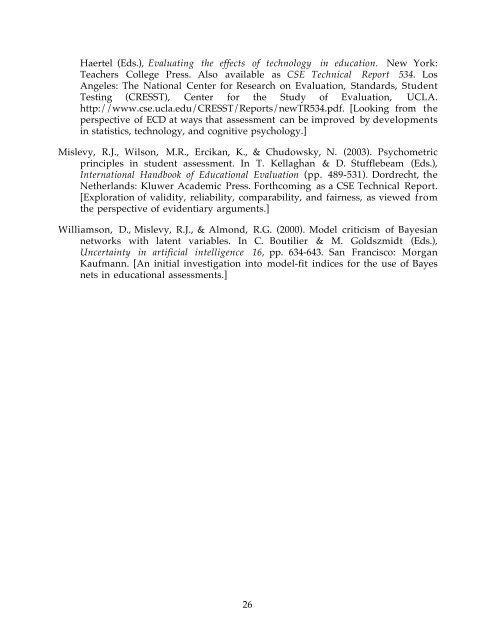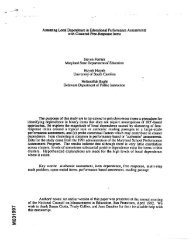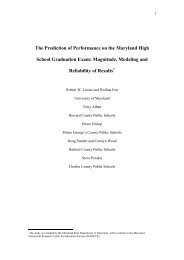A Brief Introduction to Evidence-Centered Design CSE Report 632 ...
A Brief Introduction to Evidence-Centered Design CSE Report 632 ...
A Brief Introduction to Evidence-Centered Design CSE Report 632 ...
Create successful ePaper yourself
Turn your PDF publications into a flip-book with our unique Google optimized e-Paper software.
Haertel (Eds.), Evaluating the effects of technology in education. New York:Teachers College Press. Also available as <strong>CSE</strong> Technical <strong>Report</strong> 534. LosAngeles: The National Center for Research on Evaluation, Standards, StudentTesting (CRESST), Center for the Study of Evaluation, UCLA.http://www.cse.ucla.edu/CRESST/<strong>Report</strong>s/newTR534.pdf. [Looking from theperspective of ECD at ways that assessment can be improved by developmentsin statistics, technology, and cognitive psychology.]Mislevy, R.J., Wilson, M.R., Ercikan, K., & Chudowsky, N. (2003). Psychometricprinciples in student assessment. In T. Kellaghan & D. Stufflebeam (Eds.),International Handbook of Educational Evaluation (pp. 489-531). Dordrecht, theNetherlands: Kluwer Academic Press. Forthcoming as a <strong>CSE</strong> Technical <strong>Report</strong>.[Exploration of validity, reliability, comparability, and fairness, as viewed fromthe perspective of evidentiary arguments.]Williamson, D., Mislevy, R.J., & Almond, R.G. (2000). Model criticism of Bayesiannetworks with latent variables. In C. Boutilier & M. Goldszmidt (Eds.),Uncertainty in artificial intelligence 16, pp. 634-643. San Francisco: MorganKaufmann. [An initial investigation in<strong>to</strong> model-fit indices for the use of Bayesnets in educational assessments.]26






